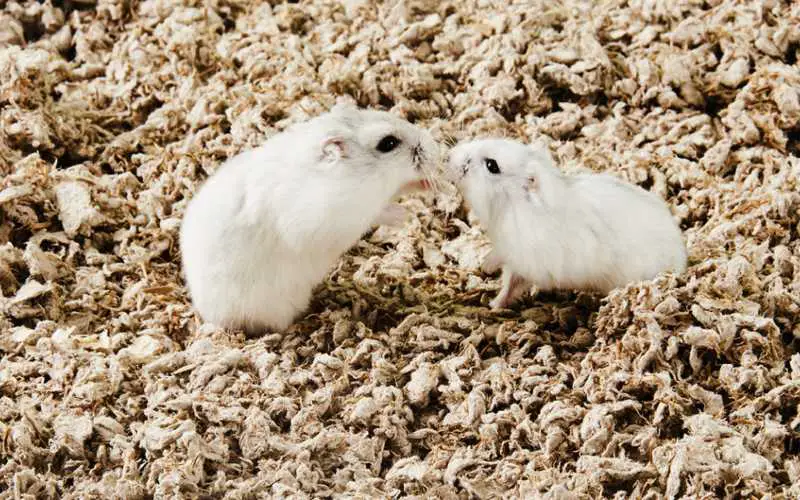hamsterhappy.co.uk is a participant in the Amazon Services LLC Associates Program and other affiliate advertising programs designed to provide a means for us to earn fees by linking to Amazon.com and affiliated sites. Affiliate links may be used on this page and in hamsterhappy.co.uk articles, but they do not impact on the price that you pay and they do help me to get this information to you for free. Read my privacy policy for more information regarding affiliates.
How to do it, what to expect, and what to watch out for!
For many of us, the only thing better than one hamster is two, and the only thing better than two hamsters is two, plus a whole little of adorable babies. This reason alone was enough for a lot of us hamster heads to take up breeding, but it also can bring the added bonus of producing a tidy little profit (just make sure to have buyers lined up if you plan to sell them, as pet shops are very particular about who they buy from!).
This is not something to be taken lightly though. Unfortunately, there are a bunch of birth defects that can leave your litter seriously ill or worse if you are not careful and breed the wrong pairs, causing everyone involved a lot of stress, pain, and heartache. This is not the only danger either. If not done correctly, things go wrong, or they are disturbed too much, female hamsters can get extremely aggressive. It is not at all uncommon for the female to kill the male if she is not on heat, or in some cases even kill and eat her new babies if she feels threatened or unsafe.
Obviously absolutely no one wants this to happen, and so you should not even think about breeding hamsters unless you are an experienced hamster owner or have done so before. Even the most experienced people in life can afford to learn a little more though, and so we have put together this quick how-to guide to hamster breeding.
The Breeding Process
First up, you need to select your hamsters. Breeders carefully select these to maximise chances of a healthy offspring, so if you are new to hamster breeding it is always best to buy breeding hamsters directly from a breeder to ensure your little friends are compatible. This is to prevent any of the genetic diseases we mentioned above, and so is something that absolutely should be left to the experts.
Male hamsters can breed with multiple females at once, and experienced breeders often do this. Again though, for your first few times we recommend just sticking to one male and one female to absolutely maximise your chances of success.
Next you need to take your hamsters home and keep them completely separate for a day or so. Not only should they 100% be in different cages but ideally kept in different parts of your house as they get used to their new homes.
You can then introduce them to each other by placing their cages together, though it is important to note they are still unable to get to each other. This allows them to grow familiar with the others’ scent.
Now you must wait for the female to be in heat. This happens roughly every four days though so don’t worry; it won’t be too long! You can tell the female is in heat from very similar behaviour to cats in heat: crouching low with a raised tail, a strong musky smell full of pheromones, and sometimes a bit of vaginal discharge.
With the female in heat like this, you can then add the male to her habitat, ideally in the evening as hamsters are nocturnal creatures, and breeding should occur. It won’t always however, and so you should wear thick bite-proof gloves and be ready to intervene if the female starts to attack the male. While successful breeding can be a bit of a scuffle so you shouldn’t intervene immediately, it will quickly become obvious whether it is a lovers tiff or a genuine fight to the death at which point you should remove the male. This is likely just an issue of timing, and so you should be good to try again another day.
If everything goes well though, you should leave them together for a couple of hours or overnight, and then remove the male and let the female get on with pregnancy.
From now on you should stay out of her way as much as possible, perhaps providing some more material for her to make a nest, and discretely filling her food and water supply, but that is it. Definitely do not try to handle or play with her during pregnancy.
The pregnancy should last for around 16-22 days, during which time you may notice a larger tummy on your female. This is hardly surprising as she is likely carrying 4-6 new baby furballs in there!
At this point though your job is pretty much done. Just sit back, admire your handiwork, and make sure she is well fed. Nature, and the soon-to-be hamster mummy, will do the rest.
You can read more of our articles on Hamster Litter.



1 thought on “Hamster Breeding”